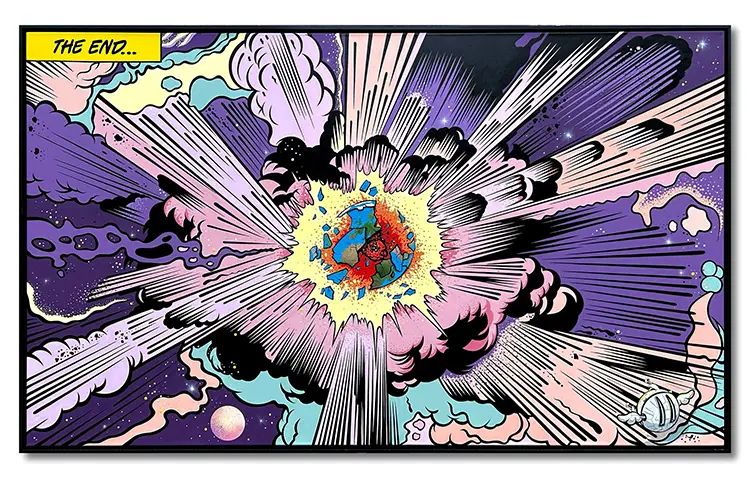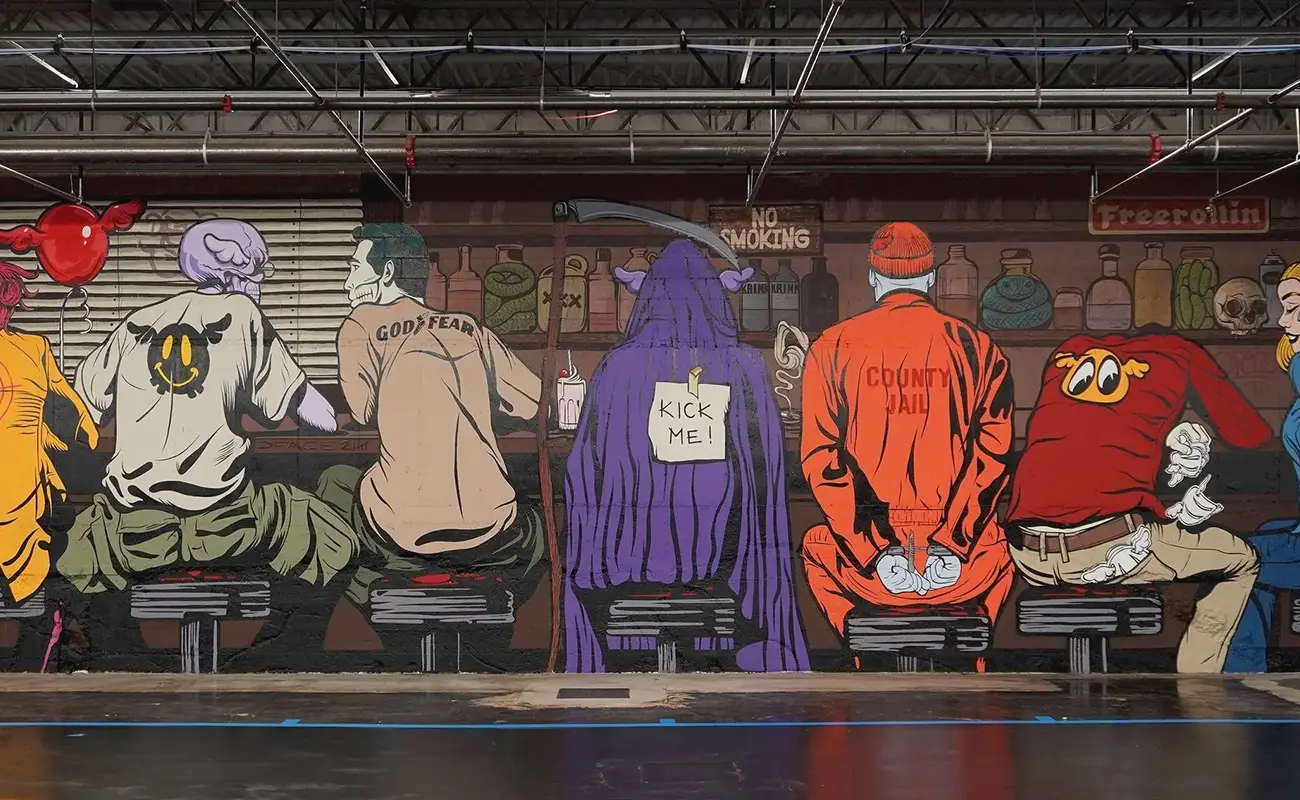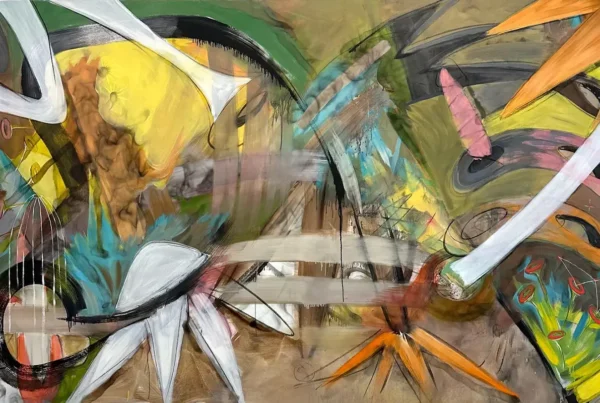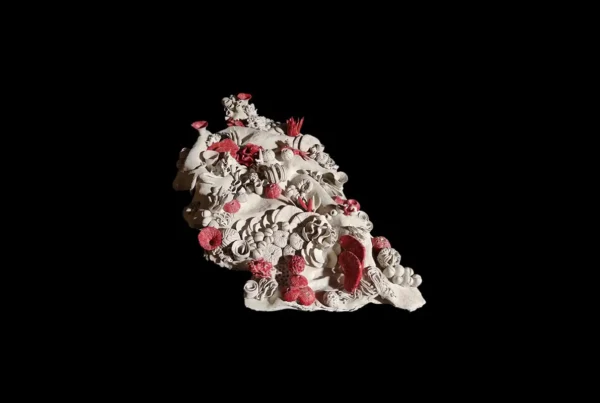The Spark Behind the Spray: How Frustration and Freedom Gave Birth to D*Face
A decade before his name became synonymous with contemporary British street art, Dean Stockton — widely recognized by his moniker D*Face — found himself trapped in a daily grind that numbed more than inspired. Working a desk job that dulled his creative instincts, he passed the hours sketching idly on scraps of paper, a quiet protest against the monotony of routine. These sketches, once harmless doodles, gradually morphed into peculiar figures: surreal, misshapen, and mischievous. What began as a personal escape quickly snowballed into something far greater. Replacing pencil with a marker pen and paper with adhesive vinyl sourced from DIY stores, he began to seed these characters across his neighborhood, plastering them on lamp posts and utility boxes. Over time, these images multiplied, evolving from solitary stickers into a network of visual breadcrumbs that marked his journey home. His after-hours hobby escalated into an obsession that demanded more than evenings and weekends — and soon, his day job was history.
The transition from unassuming stickers to striking public installations signaled the birth of an artist with a distinctly disruptive voice. Posters emerged next, each more audacious than the last, as D*Face honed his practice with a bold, unapologetic hand. Whether he quit or was pushed out of his traditional career is irrelevant; the pivotal shift had already taken place. Like a natural force carving its own course, his creative trajectory was forged through action, not intention. His characters began to speak louder, their quirky forms reflecting the absurdity of modern life and the saturation of visual culture. His early interventions on public infrastructure didn’t ask for permission — they demanded attention, encouraging viewers to look again at their surroundings and question the constructed normalcy of urban life.
These fictional misfits quickly found their place in the public psyche, becoming tools of satire aimed at consumerism, mass media, and celebrity culture. D*Face’s work used irony as a scalpel, dissecting the shiny surface of modern advertising to expose its less palatable underbelly. Altered banknotes, hijacked billboards, and unauthorized “public service announcements” infiltrated the everyday, turning mundane experiences into unexpected critiques. His aesthetic — both colorful and caustic — has consistently balanced allure with discomfort, inviting viewers to enjoy the sweetness of visual delight while being unsettled by the truth it conceals. These interventions never aimed to simply beautify, but rather to interrogate the familiar, creating friction where none was expected.
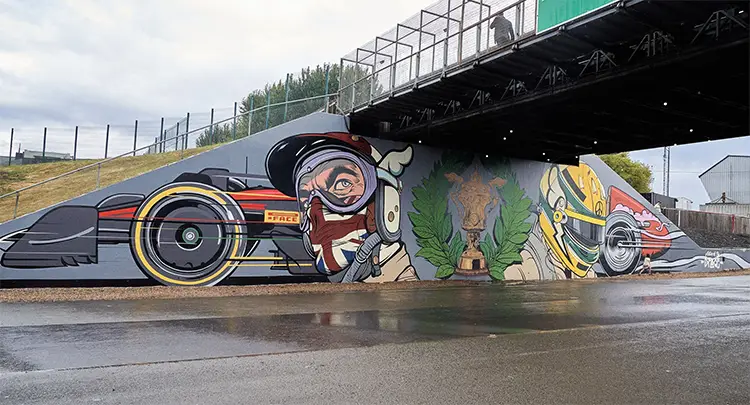
D*Face: Crafting Chaos into Cultural Commentary
As D*Face’s presence within the urban art scene solidified, his visual language developed into a distinctive blend of Pop Art irreverence and punk energy. Central to his practice is the transformation of widely recognized imagery into symbols of critique, reconfigured to undermine their original meaning. Celebrities, superheroes, and cultural icons all pass through his artistic filter, emerging as distorted reflections of society’s obsession with image, fame, and consumption. His works seldom seek to glorify; instead, they dismantle, poke fun, and hold a mirror up to a world teetering between reality and illusion. His infamous DDog logo — with its skeletal smile and cartoonish appearance — serves as a visual signature, signaling works that are equal parts playful and provocative.
His exhibitions, including landmark shows like Death & Glory and Eyecons, offered deeper insight into his evolving vision. These displays were more than gallery presentations; they were immersive experiences that forced audiences to grapple with the tension between attraction and aversion. The juxtaposition of glossy finish with dark undertones created a dissonance that felt intentional and urgent. In his reimagining of cultural figures, D*Face invites viewers to reconsider what lies beneath celebrity personas and mass-market ideals. The message is consistent: nothing is as polished as it seems, and behind every icon is a story manipulated by commercial intent. This complex layering of surface and meaning is what elevates his work beyond graffiti or illustration into something resembling visual journalism.
Yet for all its rebellion, D*Face’s work is also meticulously crafted, guided by an understanding of graphic design, illustration, and the structural integrity of visual storytelling. His early background in design and screen printing gave him the tools to refine his anarchic vision into sharply rendered statements. Influences like Jim Phillips and Vernon Courtlandt Johnson — legendary names in skate and surf culture — helped shape his sensibility, blending high-impact visuals with underground ethos. This hybrid foundation allowed D*Face to seamlessly transition between the street and the gallery, maintaining credibility in both without compromising his voice. Whether spray-painted on a wall in Los Angeles or framed in a white-cube gallery in London, his work retains its confrontational edge, serving as both art and resistance.
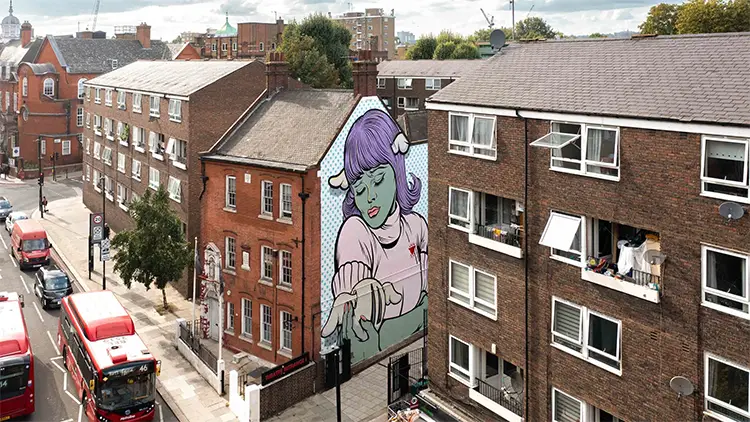
Icons Reimagined: Rebellion in Every Brushstroke
Across cities and continents, D*Face’s art is not only seen — it is experienced. His murals are visual eruptions in urban landscapes, often towering stories high, their bright hues and disfigured faces interrupting the rhythm of daily life. These large-scale works carry the same subversive DNA as his early stickers, confronting passersby with familiar yet fractured images. In places like Mexico City, Los Angeles, and Hong Kong, his wall pieces disrupt the visual uniformity of architecture, creating ruptures that demand engagement. These interventions do not merely decorate the city — they provoke dialogue, challenge indifference, and raise questions about cultural authority, authorship, and ownership of public space.
D*Face’s aesthetic mastery lies in his ability to fuse styles from disparate sources — comic books, tattoo flash, skateboarding graphics, and golden-age advertising — into a single visual grammar. This hybrid approach captures the attention of both seasoned art collectors and casual streetwalkers alike. In each work, whether it’s a weathered billboard takeover or a vibrant hotel mural, there is an invitation to re-examine the world through a distorted lens. His 2024 collaboration with art’otel London Hoxton exemplifies this immersive potential. Transforming the hotel into an ongoing artwork, he infused its walls with pieces that reflected his anti-establishment ethos. Guests were not merely observers but became part of the visual narrative, surrounded by art that simultaneously seduced and unsettled.
While his tools have expanded beyond vinyl stickers and stencil cutouts, the core of his message remains intact: art should interrupt, irritate, and interrogate. Collaborations with brands like Haig Club whisky and high-profile commissions such as the album cover for Blink-182’s California may hint at mainstream acceptance, but D*Face’s commentary has never softened. Instead, these projects serve as platforms to subvert from within, smuggling critique into spaces where it might otherwise be unwelcome. His ability to operate within both commercial and countercultural realms is a testament to his adaptability, but more importantly, to the strength of his artistic vision. Each piece, regardless of scale or setting, bears the same directive: look again, and question what you see.
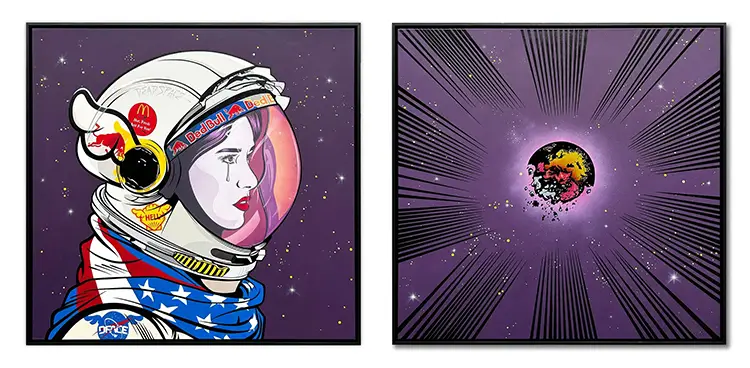
D*Face: Visual Dissent and the Never-Ending Beginning
The story of D*Face is one of persistence through provocation, a journey marked not by linear progress but by thematic exploration. Each project acts as a standalone chapter in a larger narrative arc, with stylistic threads and conceptual motifs linking them together. For the artist, these bodies of work are not final statements but ongoing inquiries, always subject to revision and reinterpretation. This iterative process keeps his art alive, never static, and always pulsing with relevance. By treating his output as a visual anthology, D*Face allows space for evolution while remaining grounded in his central concerns: the politics of imagery, the absurdity of consumerism, and the artificial gloss of modern culture.
Behind the sharp lines and bold colors lies an acute awareness of the viewer’s role in completing the artwork. D*Face has often insisted that his identity is secondary to the dialogue his pieces initiate. Whether encountered in a gallery or stumbled upon in a forgotten alleyway, his work invites subjective interpretation, encouraging audiences to bring their own experiences into the conversation. This democratic approach to meaning-making is rare in contemporary art and speaks to his punk-infused ethos of accessibility and disruption. The artist’s anonymity for much of his early career was not a gimmick but a reflection of his belief that the message, not the messenger, should remain the focal point.
One of the most personal insights into his ethos can be found in the way he recalls the beginning of his artistic path: not as a sudden inspiration, but as a gradual defiance against a life that no longer fit. His recollection of drawing characters during work hours, replacing pencils with marker pens, and using discount vinyl as his first medium reveals a story grounded in urgency and resistance. That these images, once considered “not suitable for visual consumption,” have gone on to shape global conversations around street art and public space is a powerful testament to the strength of unconventional beginnings. For D*Face, there is no final destination — only a continuous loop of creation, critique, and cultural interference. It isn’t the start, nor the conclusion. It’s a happy never ending.
